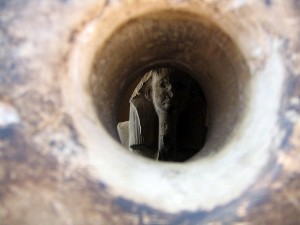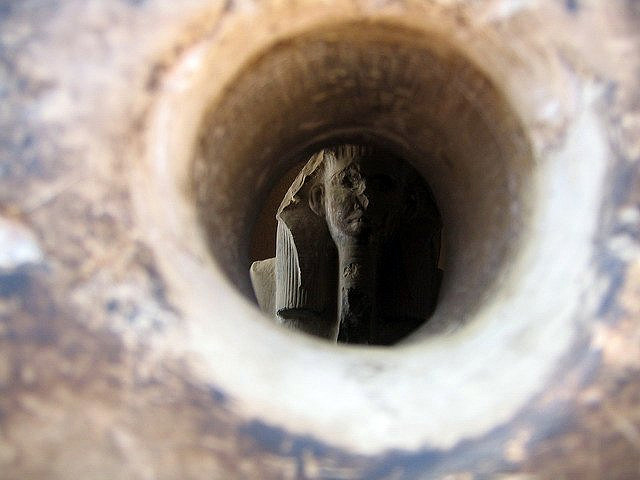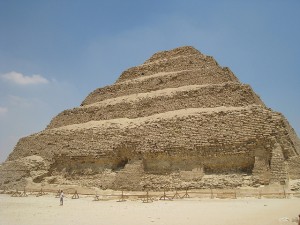The Serdab is small room situated at the north side of the pyramid. It is angled at 17 degrees, which exactly matches the incline of the pyramid.
Statue of Djoser in his Serdab
 The serdab has small holes in its north wall. The statue of Djoser was placed in the serdab in antiquity so that he could view the forecourt of the complex through the holes in the wall. The original statue was taken and is now on display in the Cairo Museum. A copy of the original was placed in the serdab.
The serdab has small holes in its north wall. The statue of Djoser was placed in the serdab in antiquity so that he could view the forecourt of the complex through the holes in the wall. The original statue was taken and is now on display in the Cairo Museum. A copy of the original was placed in the serdab.
The above notes are from: Djoser’s Step Pyramid in Saqqara – Wikiversity.
Reading up about the Serdab, very little else is said about it. It is as though no one asks what on earth was its purpose? Why build it and position it in such a fashion? Why would a stone statute require to be seated in such a building, almost like a stone built, tilted shed, with two holes in the facing wall? Robert Bauval calculates that the view was orientated 4 degrees and 35 minutes east of due north toward the star Al Kaid in the Big Dipper (in Ursa major). This star marked the rising in the East of the Star, Sirius, but does anyone else have a comment? Is Robert Bauval’s explanation for the Serdab and the statue upheld?
The making of the holes in the stone is in itself intriguing. How were they achieved?
For a general and informative article with additional links and references: ‘The Mortuary Temple, Serdab, Northern Courtyard and the West Mounds of the Step Pyramid of Djoser at Saqqara, Egypt’, click here
Djoser’s Step Pyramid: Photo credit: p_snelling / Foter / Creative Commons Attribution-NonCommercial 2.0 Generic (CC BY-NC 2.0)
Djoser statue in Serdab: Photo credit: kudumomo / Foter / Creative Commons Attribution 2.0 Generic (CC BY 2.0)

